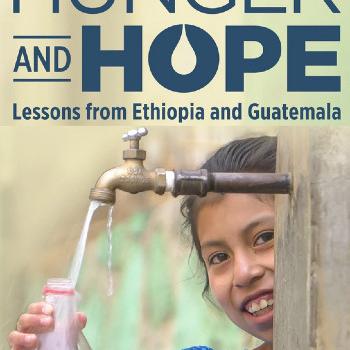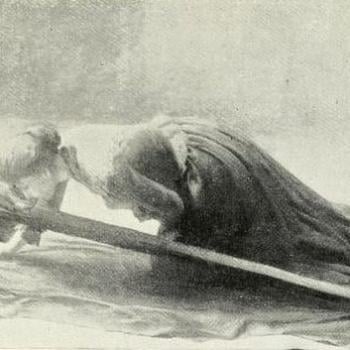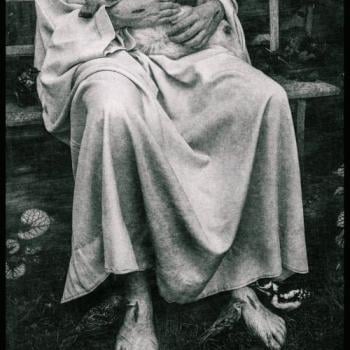It is through prayer that we ultimately express our understanding that God is running the show, but it is through Torah that we initially gain that understanding. Therefore, the more one is in touch with the message of Torah, the more one can pray properly. For this reason, we have communal Torah reading in the prayer service itself.
Communal Torah reading takes place on Shabbat, which best expresses the message of Torah since this is the day on which one can experience an element of the God-clarity that "existed" before the onset of the perception of multiplicity that came with the world's creation (as explained in last week's article). But communal Torah reading also takes place within the prayer service on the second day of the week (Monday) as well as the fifth day of the week (Thursday). This is because, when the Jewish people were in the desert and went three days without water, they complained and rebelled against God and Moshe (Moses). According to the Oral Torah, water and thirst for water are physical parallels for Torah and thirst for Torah since water is essential to the body's survival and growth just as Torah is essential to the soul's "survival" and "growth." And when the Torah states that the Jewish people went three days without water it means to include Torah—i.e., "spiritual water"—as well. Therefore, the Prophets established that the Jewish people not go three days without communal Torah reading.
Unified Multiplicity
Additionally, according to Jewish law, at the communal Torah reading we are to read a minimum of ten verses. This is because the number ten reflects the concept of multiplicity that is unified, as is apparent by our system of mathematics in which up to the number nine all is scattered and individual and the number ten brings together the otherwise scattered fragments into one cohesive unit. Thus, the Torah (the vehicle by which we increase our awareness of the One Infinite Being as the source, essence, and context of the multiplicity of this world) is read for a minimum of ten verses since the number ten reflects this concept of unified multiplicity.
The Doubt Agenda
The exception to this is when we read the section in the Torah about the nation of Amalek, which consists of only nine verses.
The Amalek section is made up of only nine verses since Amalek attacked the Jewish people when they were in the desert. This was shortly after they had left Egypt by way of miraculous events, including the splitting of the sea, and had experienced the national revelation of God at Mount Sinai and received the Torah. These were all international events that the entire world was aware of, yet Amalek took it upon themselves to disrupt the clarity of the world and raise doubt by attacking the Jewish people in a battle that they knew would decimate them.
In this suicide attack, they lost the battle but achieved their purpose of increasing doubt in humanity. That is, before Amalek attacked the Jewish people, the world was on the path to achieving God-clarity on an international level. By attacking the Jewish people, despite the fact that they lost the battle, Amalek showed the world that indeed there still are those willing to go to war with the Jewish nation, thus implying that there are still those who doubt the Jewish message and perspective on life, the world, and God.
Because Amalek is all about not seeing the One God behind and within this world of multiplicity, the Torah portion concerning Amalek includes only nine verses. Instead of reading ten verses as we usually do, which implies unified multiplicity, we read nine verses, which implies multiplicity that is left fragmented—without unity, wholeness, and purpose. This signifies that when the reality of the One Infinite Being becomes clarified here in the realm of multiplicity, Amalek and the Amalekite agenda will be uprooted from this world and, in the end, they won't have a place on the world stage and won't be a part of the picture.
Additionally, it is interesting to note that the numerical value of the word Amalek is the same as the numerical value of the Hebrew word for doubt, safek, since doubt of the One Infinite Being who is behind and within all of what goes on in the world is the essence of what Amalek is all about. Therefore, leading up to Messianic times, when doubt of the One Infinite Being will be removed, Amalek will be uprooted from the world since the Amalekite nation and their purpose—pushing the agenda of non-God-clarity and doubt—will have been served.
The communal Torah reading is, in a sense, a mini-aspect of the giving of the Torah itself. That is, the communal Torah reading is for the purpose of increasing the awareness of God in the world and in one's life, resulting in the strengthening and bringing out of one's capacity to make choices toward, and reflecting, one's Godly soul-side. In particular, the communal Torah reading is to be done during the prayer service since, by increasing God-awareness through Torah reading, one comes to not only see the reality that God is the Source of all, but to live the reality that God is the Source of all; this is what prayer is all about. The learning of Torah is teaching what life is all about, but the act of praying is living what life is all about.
7/20/2011 4:00:00 AM





